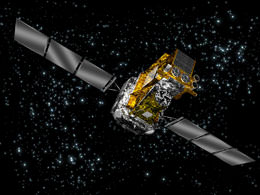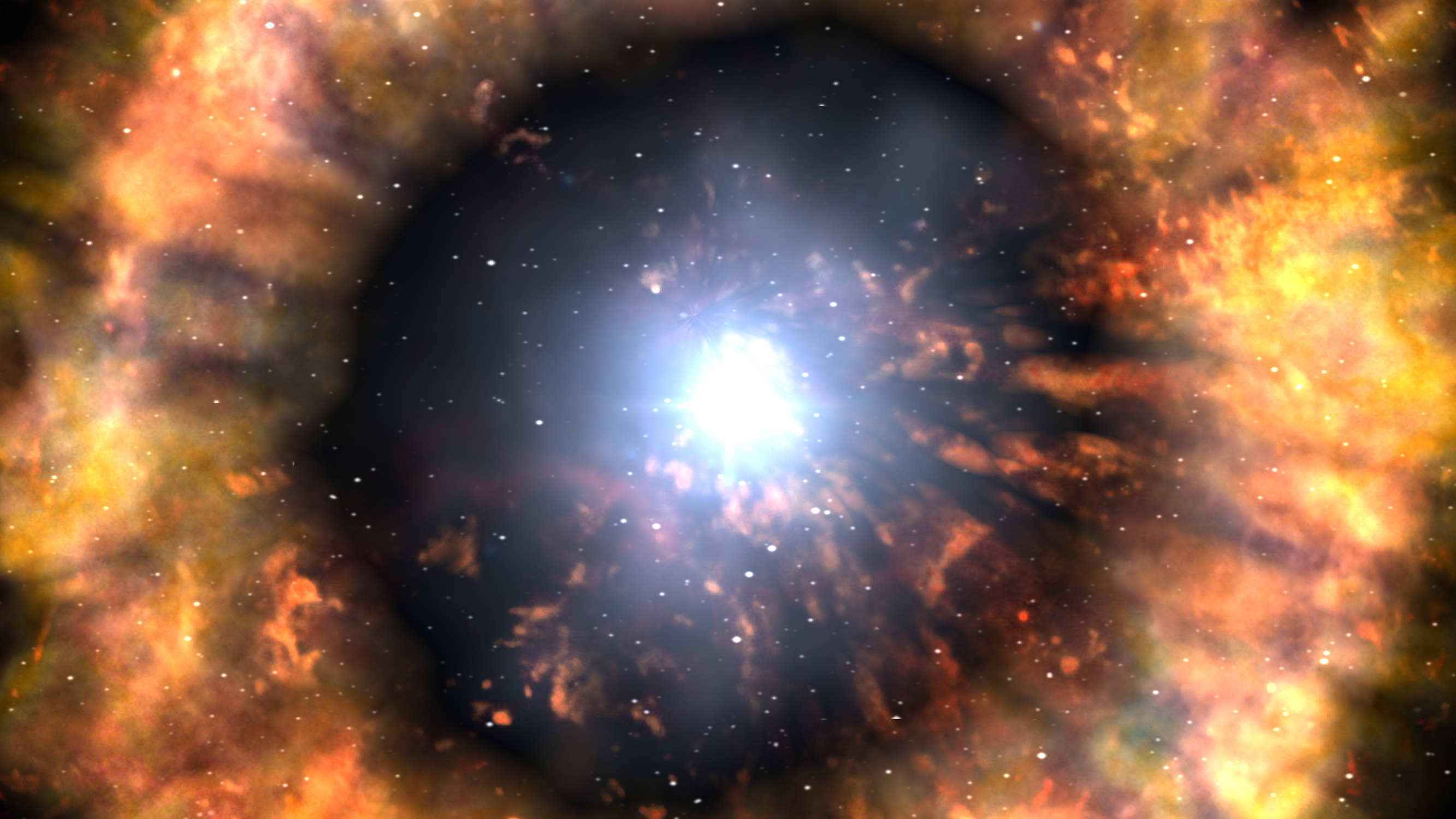A team of astrophysicists has solved the mystery of the distribution of gamma rays in our Milky Way galaxy. While some researchers thought the distribution suggested a form of undetectable “dark matter”, the team from the University of California, San Diego, proposed an explanation based on standard physical models of the galaxy.
In two separate scientific papers, the most recent of which appears in the July 10 issue of the journal Physical Review Letters, the astrophysicists show that this distribution of gamma rays can be explained by the way “antimatter positrons” from the radioactive decay of elements, created by massive star explosions in the galaxy, propagate through the galaxy. That means, the scientists said, the observed distribution of gamma rays is not evidence for dark matter.
“There is no great mystery,” said Richard Lingenfelter, a research scientist at UC San Diego’s Center for Astrophysics and Space Sciences who conducted the studies with Richard Rothschild, a research scientist also at UCSD, and James Higdon, a physics professor at the Claremont Colleges. “The observed distribution of gamma rays is in fact quite consistent with the standard picture.”
Over the past five years, gamma ray measurements from the European satellite INTEGRAL have perplexed astronomers, leading some to argue that a “great mystery” existed because the distribution of these gamma rays across different parts of the Milky Way galaxy was not as expected.
To explain the source of this mystery, some astronomers had hypothesized the existence of various forms of dark matter, which astronomers suspect exists—from the unusual gravitational effects on visible matter such as stars and galaxies—but have not yet found.
What is known for certain is that our galaxy—and others—are filled with tiny subatomic particles known as positrons, the antimatter counterpart of typical, everyday electrons. When an electron and positron encounter each other in space, the two particles annihilate and their energy is released as gamma rays. That is, the electron and positron disappear and two or three gamma rays appear.
”These positrons are born at nearly the speed of light, and travel thousands of light years before they slow down enough in dense clouds of gas to have a chance of joining with an electron to annihilate in a dance of death,” explains Higdon. “Their slowing down occurs from the drag of other particles during their journey through space. Their journey is also impeded by the many fluctuations in the galactic magnetic field that scatter them back and forth as they move along. All of this must be taken into account in calculating the average distance the positrons would travel from their birthplaces in supernova explosions.”
”Some positrons head towards the center of the Galaxy, some towards the outer reaches of the Milky Way known as the galactic halo, and some are caught in the spiral arms,” said Rothschild. “While calculating this in detail is still far beyond the fastest supercomputers, we were able to use what we know about how electrons travel throughout the solar system and what can be inferred about their travel elsewhere to estimate how their anti-matter counterparts permeate the galaxy.”
The scientists calculated that most of the gamma rays should be concentrated in the inner regions of the galaxy, just as was observed by the satellite data, the team reported in a paper published last month in the Astrophysical Journal.
“The observed distribution of gamma rays is consistent with the standard picture where the source of positrons is the radioactive decay of isotopes of nickel, titanium and aluminum produced in supernova explosions of stars more massive than the Sun,” said Rothschild.
In their companion paper in this week’s issue of Physical Review Letters, the scientists point out that a basic assumption of one of the more exotic explanations for the purported mystery—dark matter decays or annihilations—is flawed, because it assumes that the positrons annihilate very close to the exploding stars from which they originated.
“We clearly demonstrated this was not the case, and that the distribution of the gamma rays observed by the gamma ray satellite was not a detection or indication of a ‘dark matter signal’,” said Lingenfelter.
Source: UC San Diego












